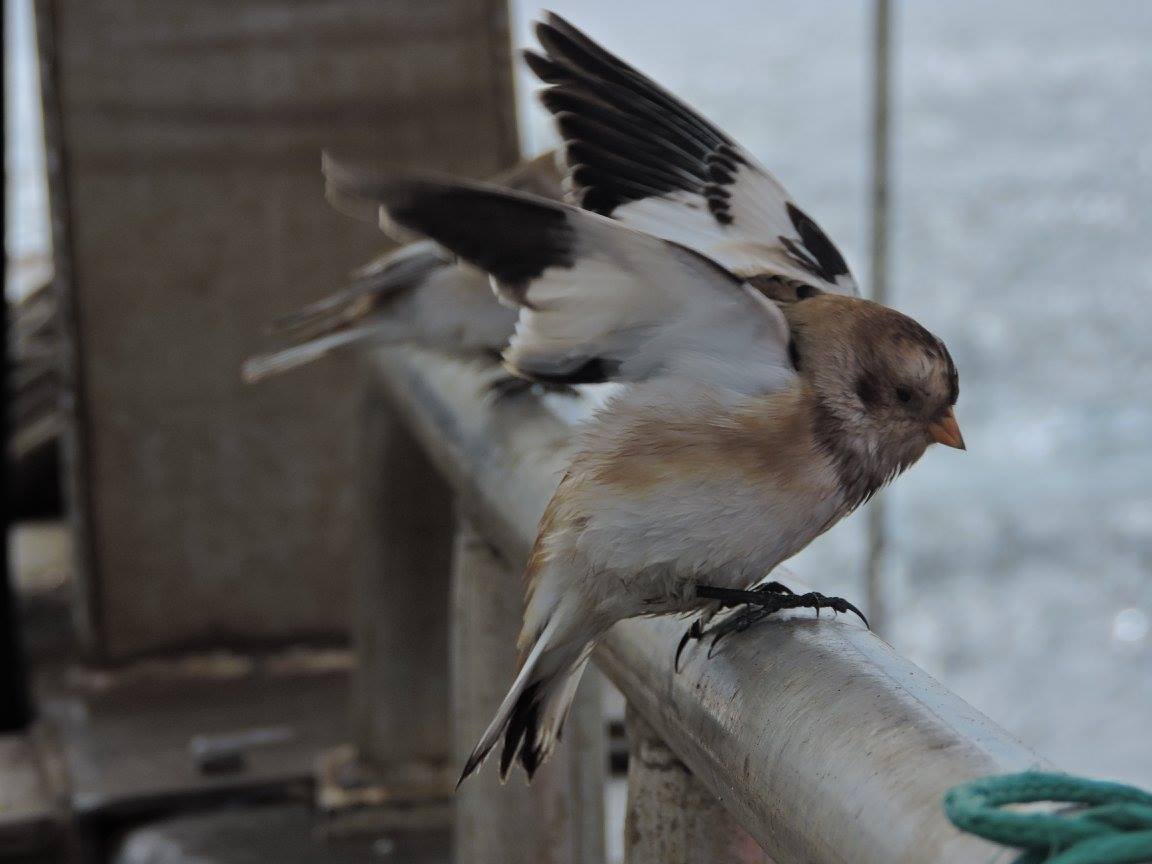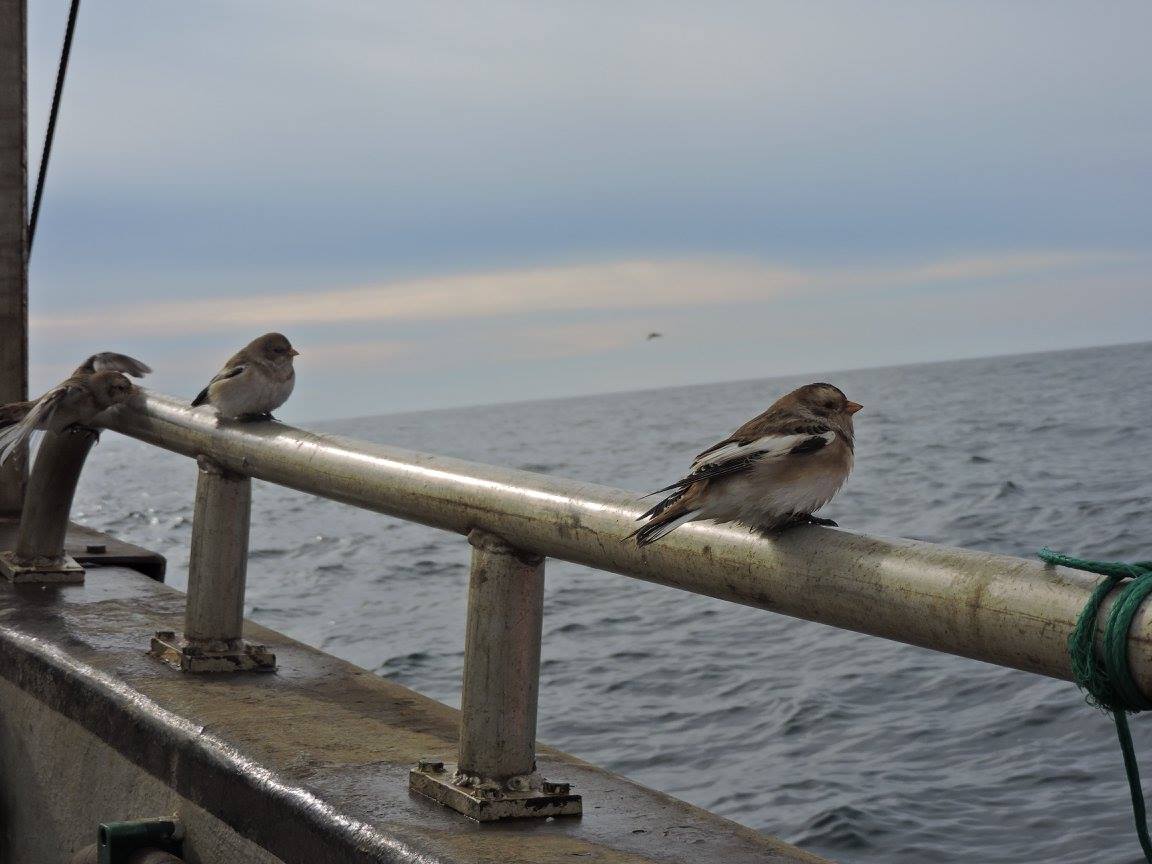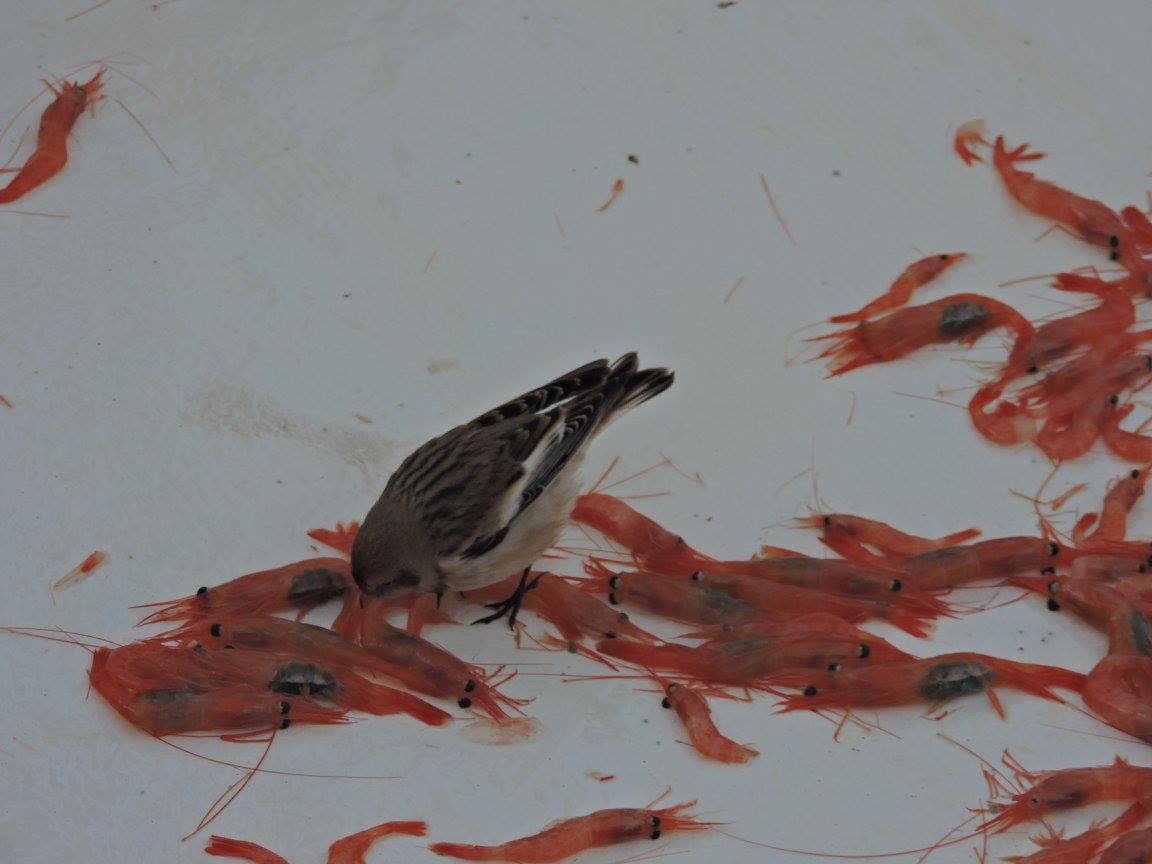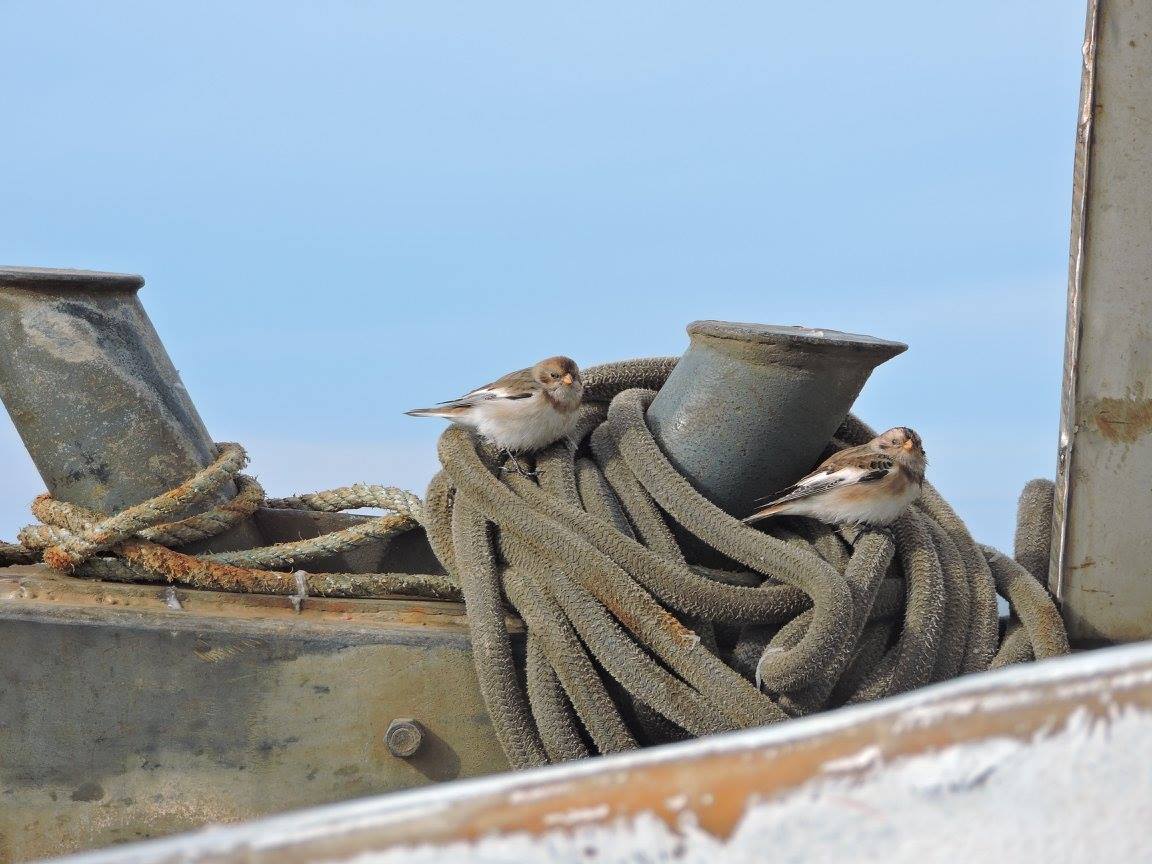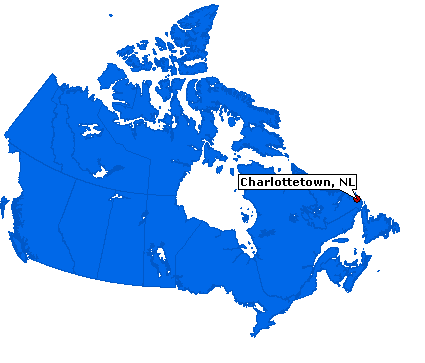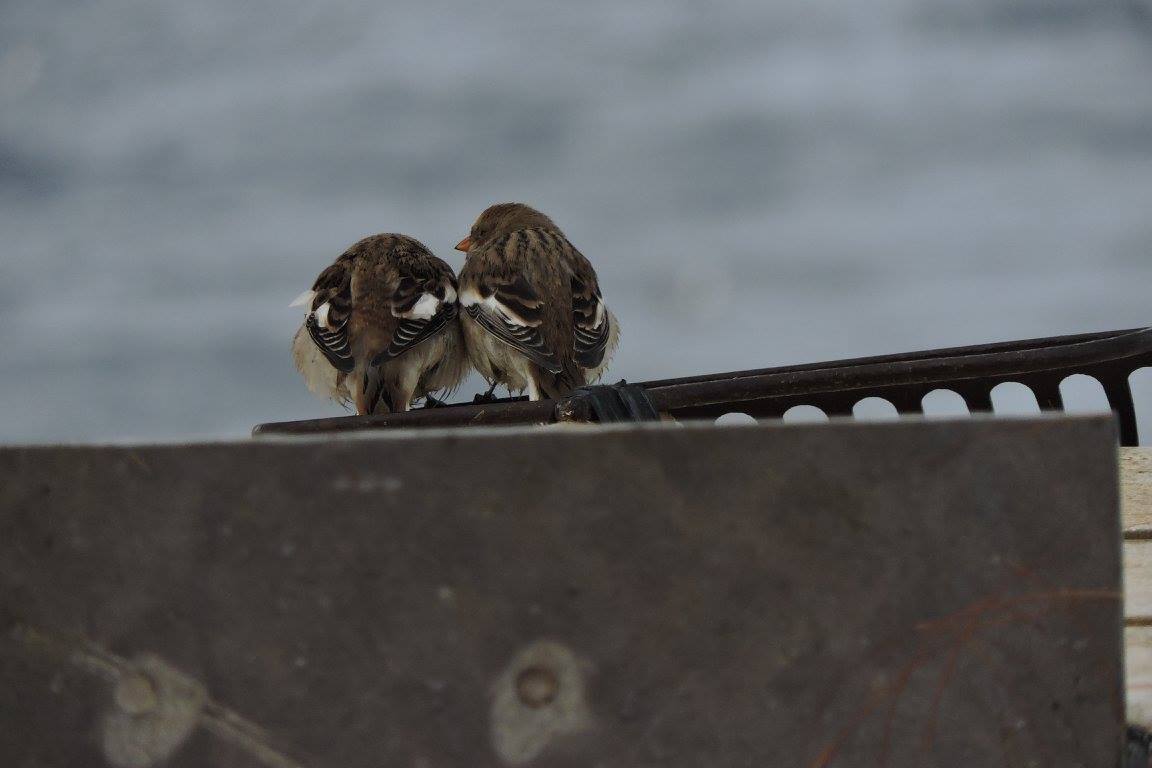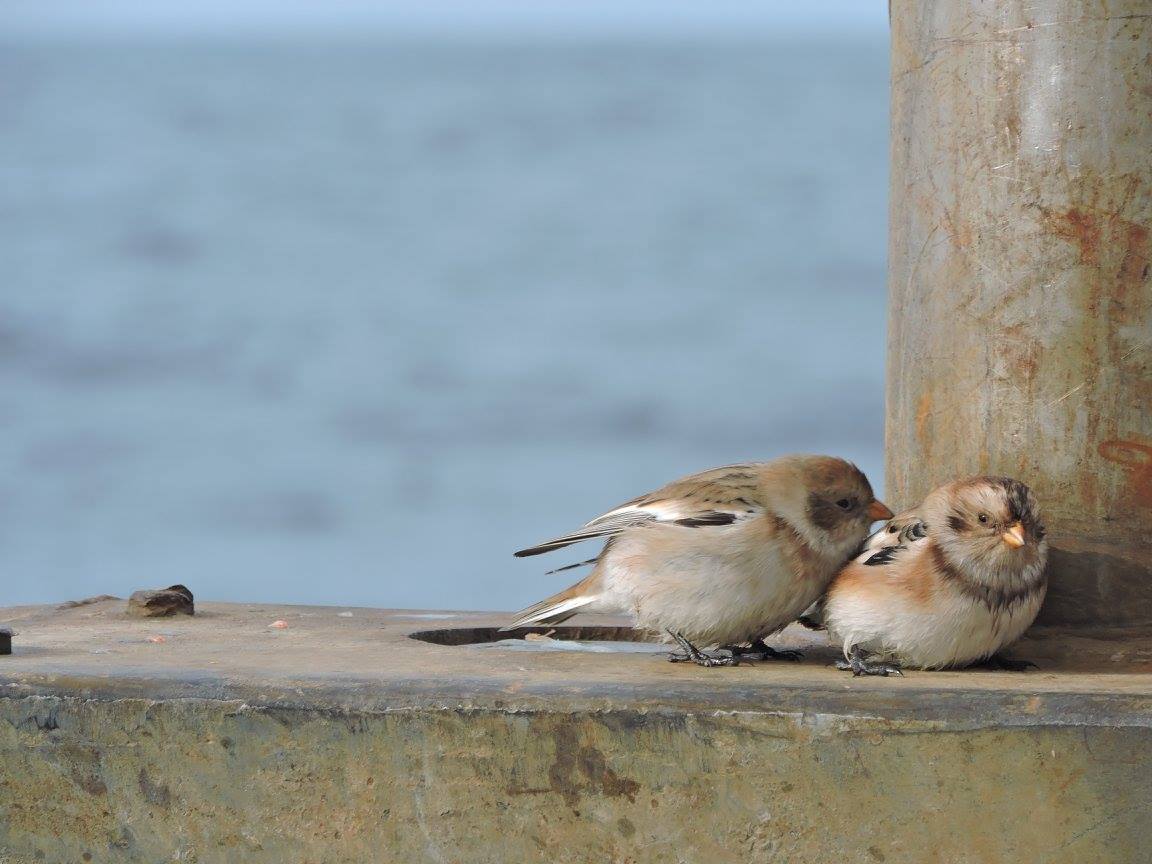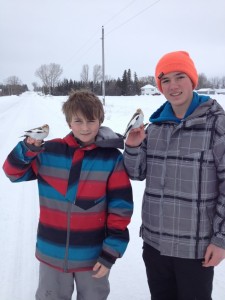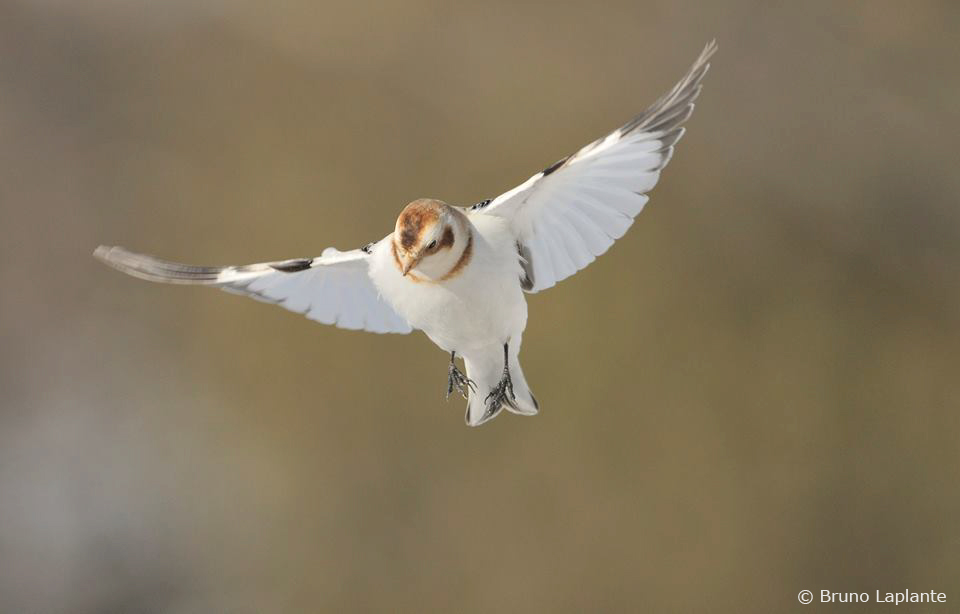
WOW! What a great winter it has been! I’m really happy to be sharing with you this last bunting checkup, with plentiful of great season reports in it. Thanks to everyone for taking the time to share the highlights of their 2015 season. Enjoy the reading!
Quick note : it would be great if everyone could send me their data once it’s been entered so that I can add it to the CSBN database. Thanks!
ONTARIO
(March 28th) Just before the March Break we had a big melt, exposing lots of spilled corn around our site and making trapping snow buntings practically impossible. I hate to admit that I was looking forward to packing away the traps for the year, but then, in typical Northern Ontario fashion, a few more inches of snow fell. Although the bird numbers had greatly dropped at our site, the students at Kerns decided to give it another week’s effort. Every day a small flock of about 30 birds came to visit the traps, every day we would catch 3 or 4 birds, and every day the kids hoped to get a foreign bird. On Friday March 27th we were surprised to band 26 SNBU in a flock that couldn’t be much more than 30 birds, and to our pleasant surprise, in that small flock was a David Lamble bird! Also this week we had a couple of returning birds from other years and one of our birds was recovered by Simon Duval at his Coteau-du-lac site.
We will continue our efforts for another week to see if we can catch any other foreigns on their way north. Here is a picture of us in our new banding shirts and toques- the third annual SCHOOL OF FLOCK snow hill picture! 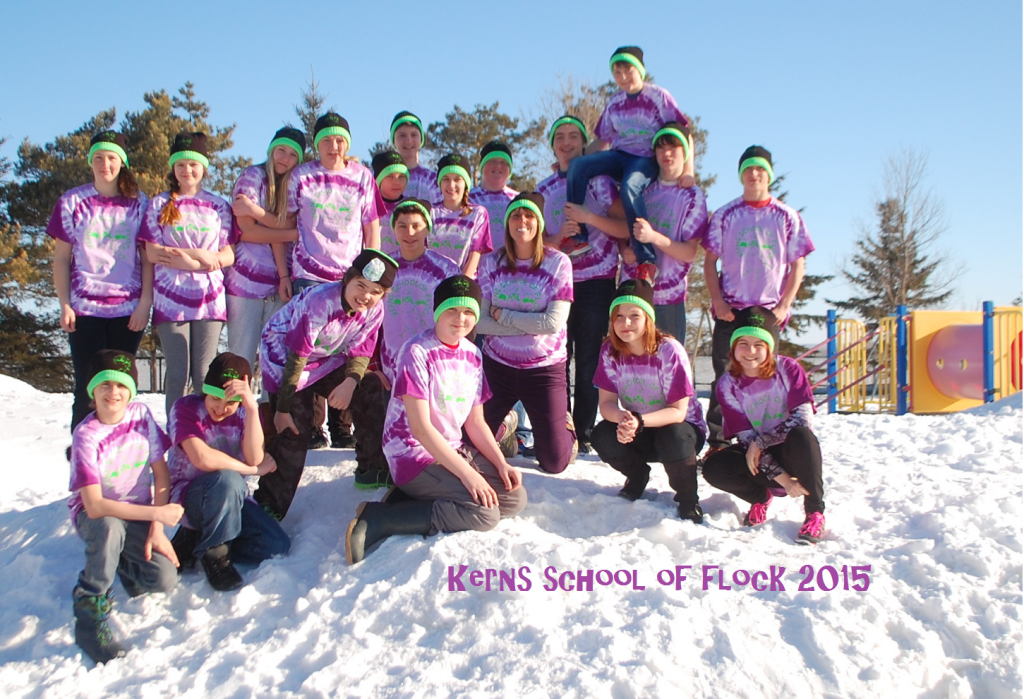

One of Kern’s fan club members. Humm.. Looks like a familiar face.
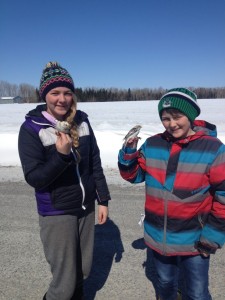
Jaden & Andrew
(April 2nd) Well we were determined to try to band a few more birds since our last post. On Monday March 30th two determined students Andrew and Jaden sat in the banding-mobile for two hours at the trap site. A small flock of about 20 snow buntings hung around the traps but the students were only able to catch one. Also a gathering of crows decided to take an interest in the site making catching snow buntings practically impossible. We kept an eye out for the next two days, but besides seeing a solitary snbu flying over the school, no more birds have visited the trap site. Below is a brief outline of our banding season. Needless to say the students were disappointed with our totals, but enjoyed the experience nonetheless.
Banding Totals
462 Snow buntings (Previous record 1400)
7 Lapland longspurs (previous record 64)
Interesting recaptures and recoveries
-On January 8th Simon Duval recovers Kerns’ bird originally banded Jan. 28th 2013
-On January 25th Bruce Murphy recovers a David Lamble bird from Fergus Ontario at the Dawson Point site originally banded on Feb 4th 2014 as a second year male
-On January 29th Kerns’ students recapture 3 Snow buntings originally banded on January 29th 2013 (exactly two years earlier) and one snow bunting originally banded on Feb 23rd 2012
-On March 24th Simon Duval recovers another Kerns’ bird originally banded on Jan 8th 2014
-On March 27th Kerns’ students recover a David Lamble bird originally banded on March 30th 2014.
-The longest bird to hang around Kerns was first banded on January 24th and was last caught on March 27th
-The most frequently recaptured snow bunting was first banded on January 29th and was caught 4 more times! It was last recaptured on March 8th. Joanne Goddard, Temiskaming
*** If you have not done so, go check out Kern’s student banding video on you tube!
Hello, the Snow Buntings left my property around March 17th or 18th, just a couple of days after I spotted a Lapland Longspur among the flock. As always, I will miss their soft chirping and aerial display! I will let you know as soon as they come back next season, usually around December. Lise Balthazar, Sheridan Rapids
(April 6th) Report from Nancy Furber : It was a late start to the Snow Bunting (SNBU) banding season in Hagersville area for 2015 due to the lack of winter weather. During the month of January there was very little snowfall, some very cold COLD days but very few SNBU’s were observed and no bait site had been established. On February 1st and 2nd that all changed with the first snowstorm of the year when a Colorado low swept through the area leaving over 30 cm of snow.
On February 2nd, I established a few piles of corn at the old bait site in the country from 2014. I was hoping the Snow Buntings would remember the site from last year and return again this year. So, when I returned on February 3rd, it was a beautiful sight to see a small flock of Snow Buntings feeding on the corn. I was ready to band some Snow Buntings so I trapped my first buntings on February 3rd and the bunting banding season had begun! Through the month of February and the first week of March there were 28 banding days. The total number of birds banded was 3,602 birds: Snow Bunting’s – 3,462; Horned Lark’s – 124; and Lapland Longspur’s – 16 (significant drop from previous years). There were 21 foreign retraps and 12 retraps of Ruthven banded birds from previous years.
On March 3rd, I established a second banding site in the small town of Hagersville at the train depot. The two bait sites were six km’s apart, east to west. At the train depot, there were two grain cars on a side track. For over a week I had observed flocks of Snow Buntings (~300) feeding at this site. There were piles of oats scattered on the ground under the cars. Once I put a couple of small piles of corn down at this site the Snow Buntings were feeding on it instantly! The very first day (March 3rd) I banded at the train depot site, I retrapped six Snow Buntings that had been banded earlier in February at the bait site in the country! The Snow Buntings were flying back and forth between the two sites to feed.
Of the 21 foreign retrapped Snow Buntings, five of them were trapped at the train depot site and sixteen from the country site. The 14 retrapped birds with Ruthven bands included 12 Snow Buntings and 2 Horned Larks, all trapped at the country bait site. One of the oldest Snow Buntings was an ASY F banded in 2011 and the oldest Horned Lark was banded in 2013.
The month of February was one of the coldest months on record, with a mean temperature of -15 C. There was also a new Snow Bunting banding record this season with 3,462 buntings banded, the old record was 2,844 birds banded. Even with the cold temperatures some days were beautiful with the warmth of the sun and the site of watching the ‘Snowflakes’ (buntings) swirling and dropping out of the blue sky. Thanks to everyone for a great season! Nancy Furber, Ruthven Park Banding Lab, Cayuga
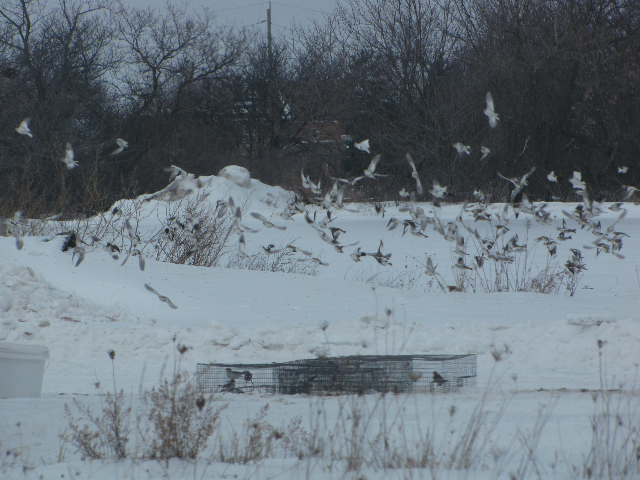
Train depot site – busy days with birds coming in to feed.
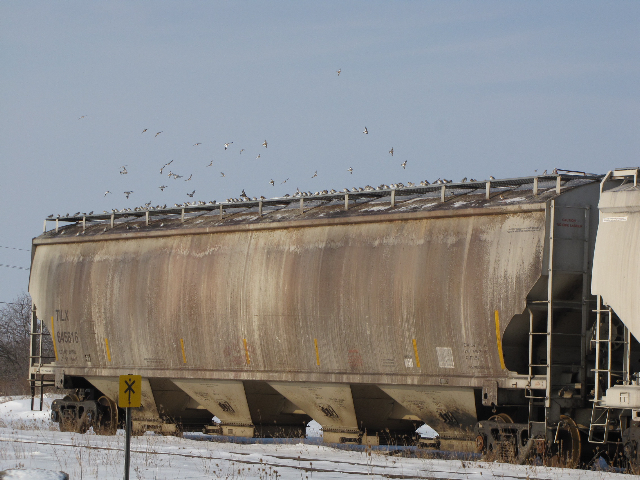
Snow Buntings all lined up along the top.
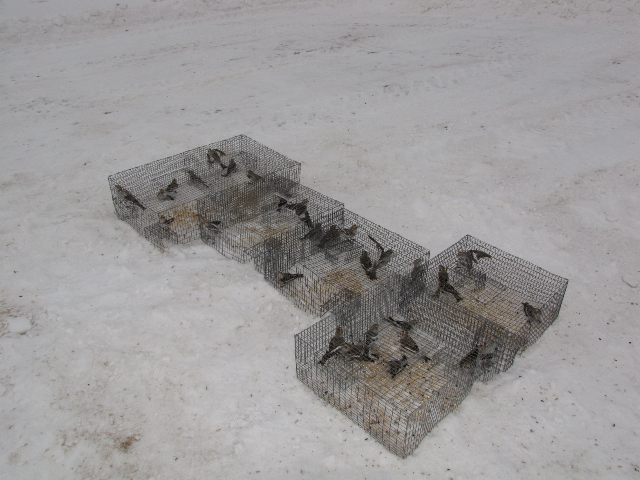
Trap set-up successfully catching birds.

The new site at the train depot.

Always looking both ways as I crossed the tracks!
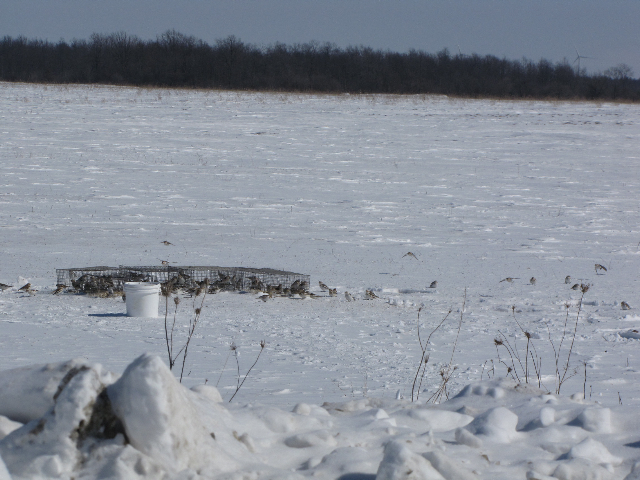
The bait site in the country. Open country in every direction.
(31st March) I haven’t seen a Snow Bunting in the area in the past week. Most of the snow has melted and there is a lot of open ground to cover now. We may get a few small flocks moving through from the south over the next couple of weeks but I doubt that any will stay in one place for long. Cindy Carthwright, Bruce
(April 2nd) Hi Marie-Pier, a short summary for King City: 1668 SNBU banded 2015, with 596 recaptures vs. 1242 banded and 129 recaps in winter 2013-2014. A consistent food supply in agricultural fields at and near the site is a likely reason for the higher bird counts, bandings and recaps. The sex ratio change is harder to interpret with 18% females the previous year, 59% this. We had many more opportunities to ponder those tricky to age females this year .
Age ratios were similar to last year: 73% juvenile age class (HY to Dec 31, SY from Jan 1) in 2013-14 and 76% juvenile this winter.We had 14 foreign birds recaptured, several of which repeated after first capture, versus 8 last year, and no repeats. 10 of the 14 this year were within season bandings from David Lamble, 99 km to the west. The others were S. Ontario bandings from last year.
As you know, we began scoring the crop this winter after realizing that there was sufficient variability to affect any analysis that might look at weight-fat score. Using a 4 point scale ,where 0 reflects no visible food in crop, when viewed through the skin at the front, sides and back of the neck. A score of 4 was recorded where there were 2 large bulging areas of crop (generally seen front and back, sometimes front and side of neck). A 2 score for half full most often represented as one large bulge, rarely two areas half full. 1 and 3 scores were used if crop fullness was judged to be between the 0 and 2 or 2 and 4 levels. We found good consistency between 3 banders in scoring this way. It was a simple matter to blow the feathers aside to assess this, while scoring fat, simply by continuing the process around the neck of the bird.
It was an interesting season. We hope some of these birds will still be seen heading back to the breeding grounds. We wish everyone a Happy spring. On to the next banding season …. Theresa Mckenzie, King City
Bonjour Marie-Pier, we did ok with the Snow Buntings……. a final total of 7 061. I have included the times in the data set. I hope that is of value. Strange year……. over 1 000 females banded…… never had that many before. Oh well, I will look forward to next season…………………… David Lamble, Fergus
Hi Marie,
Here is our season totals in Glen Morris :
SNBU : 1050 HOLA : 109 LALO. : 2
17 foreign recaptures. 170 recap records.
Here are the foreign recaptures we do not have records for :
2531-30896 SY M
2691-56568
2691-56613 SY M
2691-80221 SY F
2691-81072 ASY F
Bill Read and Ross Dickson, Glen Morris
QUÉBEC
This year, Patrice Bourgault (Université de Sherbrooke) and I chose to band on 4 different sites around the city of Sherbrooke, QC. We stopped baiting at one of them, because no birds were seen after a month of baiting. My hypothesis is that the birds were disturbed by one of the neighbours. The 3 other sites provided us with some faithful groups of birds.
We can only band once or twice a week for half a day each session, although next winter I am planning to go almost full time. We started this project with several objectives in mind. First of all, we wanted to give the bachelor students another opportunity to band and to handle small birds. Another objective was to learn more about the dynamics of local movements of the Snow Bunting in the Eastern Township, which is apart from other sites in part, because it’s far from the main migration/wintering area (Great Lakes and St-Lawrence River) and the landscape surrounding the sites is mainly extensive agriculture and forested lands. So this is why we plan to band on at least 3 sites every winter to maximise the recapture probabilities between sites.
This year was a good one for us, we caught birds in almost every banding session. We had a total of 37 birds and one recapture from one of our bird. We caught only 3 females and 18 older birds. We banded 9 birds from Cookshire (the same site that was run by Marie-Pier Laplante last year; 45°23’11’’N, 71°45’0’’W), 12 birds from Richmond (45°38’04’’N, 72°09’03’’W) and 16 birds from Stoke (45°32’31’’N, 71°53’07’’W).
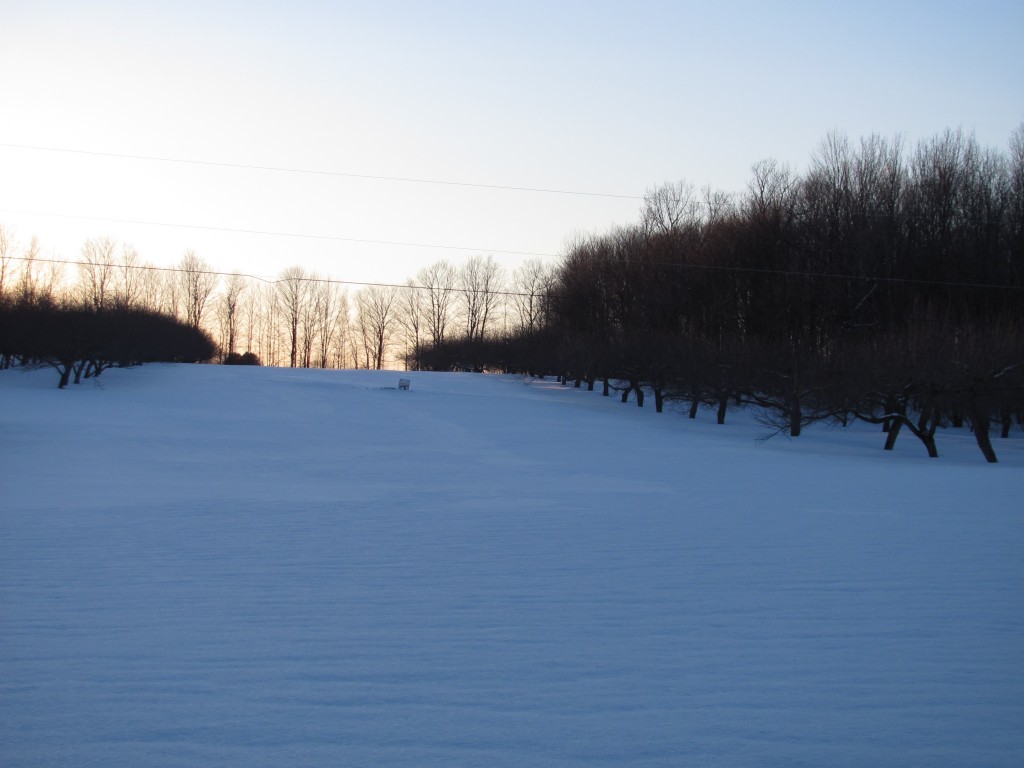
The nicely wind-sheltered Cookshire site where P-A is now banding.
We have a big project for next winter or the winter of 2017, which is to fix radio transmitters on Snow Bunting and to follow them as they move around to learn how they use their environment. The other thing that we will investigate is the differences in size on our different sites. The birds showed differences in mass and wing length through our sites. With more data, it is one of the things that we would like to look into, maybe linking it with isotope analysis. Pier-Alexandre Dumas, Sherbrooke
** In the La Pocatière area, Thomas Biteau was able to catch his first buntings this season (11) and mentioned he will continue on his effort next year, building on the experience his first season brought to him.
Report from Southern Québec : Mirabel : From March 9 to March 26, 18 mornings of banding produced 302 SNBU, 2 HOLA and 1 LALO. Overall, the flow of birds was fairly steady without any distinct peaks. During the period, we recaptured many birds, but 2 were of interest:
-1 SNBU banded in Coteau-du-lac 3 days before being caught in Mirabel
-2531-17159, a David Lamble bird banded in Arthur, ON on 02/14/2013, a Valentine’s day bird!!
Mirabel season total: 1063 SNBU, 5 LALO and 1 HOLA
St-Roch: From March 9 to March 26, 13 mornings of banding produced 110 SNBU. The peak for St-Roch was between March 21 to March 24 with 74 SNBU banded in 4 mornings. It was a pretty good winter but we realised that St-Roch is much better early in the season, with 64% of the captures occurring before January 8th.
St-Roch Season total: 988 SNBU and 6 LALO
Coteau-du-lac : During the period March 9 to March 28, we banded 316 SNBU, 2 HOLA and 2 LALO. We had two interesting recaps, one from King City and one from Kerns Public School. Keep them coming next year, please!
Our final day of SNBU banding was March 25, although we made effort until March 28. At that point our site had devolved into a quagmire and we admitted to ourselves that the season was over.
The age and sex class percentages of our SNBU captures for the entire season are:
HY/SY-M 53%
HY/SY-F 9%
AHY/ASY-M 34%
AHY/ASY-F 2%
Our efforts were challenged by extreme cold and very high snow banks, but we managed good coverage, with captures on 60 days of our season.
Coteau-du-lac Season total: 1096 SNBU, 36 HOLA, 21 LALO and 1 SOSP
It was a good winter for our three Southern Quebec Teams. We banded a total of 3147 SNBU, a record season for us! Simon Duval, the Migration Research Foundation
In Sainte-Luce this winter, 375 SNBU’s and 4 LALO’s were banded. I had only 10 recaps of my own birds and 1 foreign recap throughout the season. Unsurprisingly, the sex ratio was 92 % males, 8% females. Banding began January 8th and remained slow until around mid/end of February, when things picked up a bit. There were 30 banding days in total (usually only morning or afternoon for 2-5 hours. And last banding day was March 23rd (and last bunting seen in that area, too).
(April 3rd) Salut Marie-Pier, after a month without SNBU, following a VERY quiet winter for SNBU in Barnston-Ouest, a small flock of 26 showed up for a day on March 14. Haven’t seen one since and don’t expect to before sometime next winter, when I hope they will return in greater numbers. Carl Bromwich, Barnston-Ouest, eastern townships
NEW BRUNSWICK
The group of 300+ in my Memramcook, NB yard has gone down to about 80-100 on Friday the 27th of March. Only about 60 Birds left Sunday March 29th. And NONE seen today so far 🙁 ….the very lively backyard I got used to since first week of January as gone silent and motionless. I will miss them. This was a first year of banding for us and we got organised way too late; but a good ”practice run” for next year. The results will be coming trough Dr. Nicolas Lecomte Alain Clavette, Memramcook, NB
SASKATCHEWAN
I have tried for the last 4 years to attract SNBUs to my area, but to no avail. Perhaps my area is too wooded – I see birds in the general area, but always in large groups and always in open areas, along the grid roads and seldom in the same place twice. It is a very difficult situation here to try to attract them to a single location in numbers that would allow me to catch them, so I will probably bow out of the program for next year. I would very much like to remain on the mailing list, however. Harold Fisher, Nisbet Banding Station, Prince Albert, SK
YUKON / NWT
(March 23rd )We have had small groups of SNBU 20-30, travelling through Haines Junction for about 2 weeks. Started our banding March 18 in local hayfield. Have 130 birds present today with high % of males. A few have beaks that are turning black and all white heads. First day of trapping was one, then 9 and the third day only 7. Using some odd traps and need to make more. Last year was a total of 32 but I was working and our flock was only 30-40. Last year our banding period was only for 2 weeks as the birds travelled through the area very quickly
(April 2nd)We had a short season here in the Yukon March 18-28th. Snow was disappearing on the 28th and too much natural food appearing for the buntings to eat. Banded 136 birds, 68% males which seems like a lower number than the eastern numbers? When looking at ASY compared with SY of both sexes we had 57% SY of which most were young males. Learned to not put out too much feed and got organized and built some of recommended ground traps. Still having birds move through.This is the second year that we have the opportunity to work this lovely species Julie Bauer, Haines Junction, YT
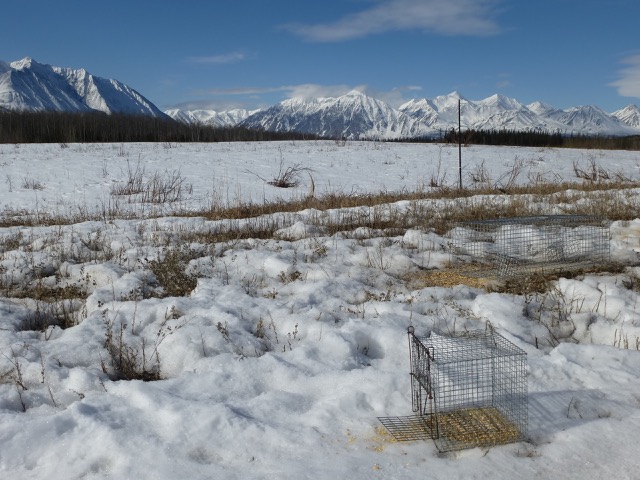
Scenic Yukon AND buntings… Who wants to go for banding holidays at Julie’s?
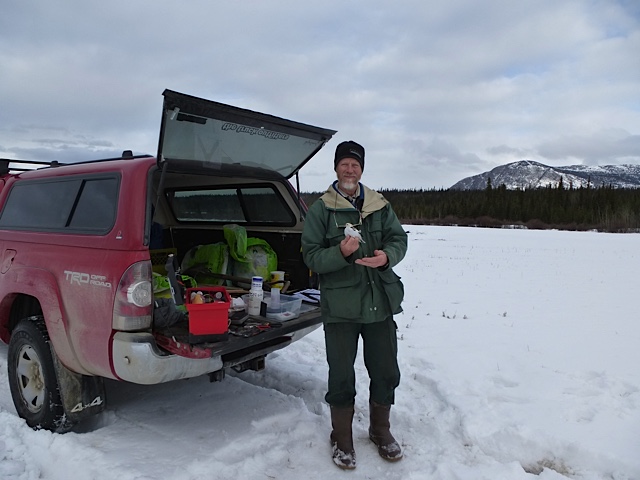
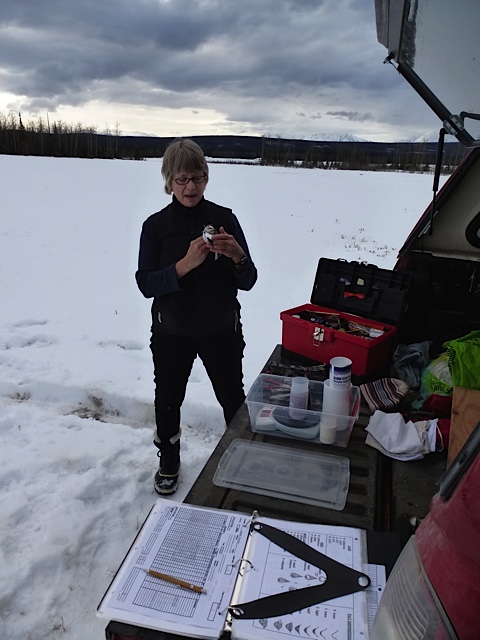
Things are still slow for Snow Buntings in the NWT; none seen in the Ft Simpson area (southwest) this weekend, but there were a few reported from Yellowknife area. With warm weather continuing, they should be coming through in good numbers very soon. Douglas Tate, NWT
Like this:
Like Loading...
